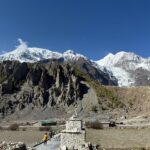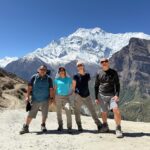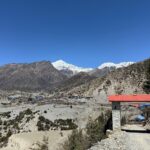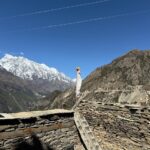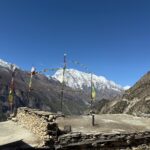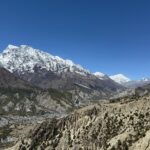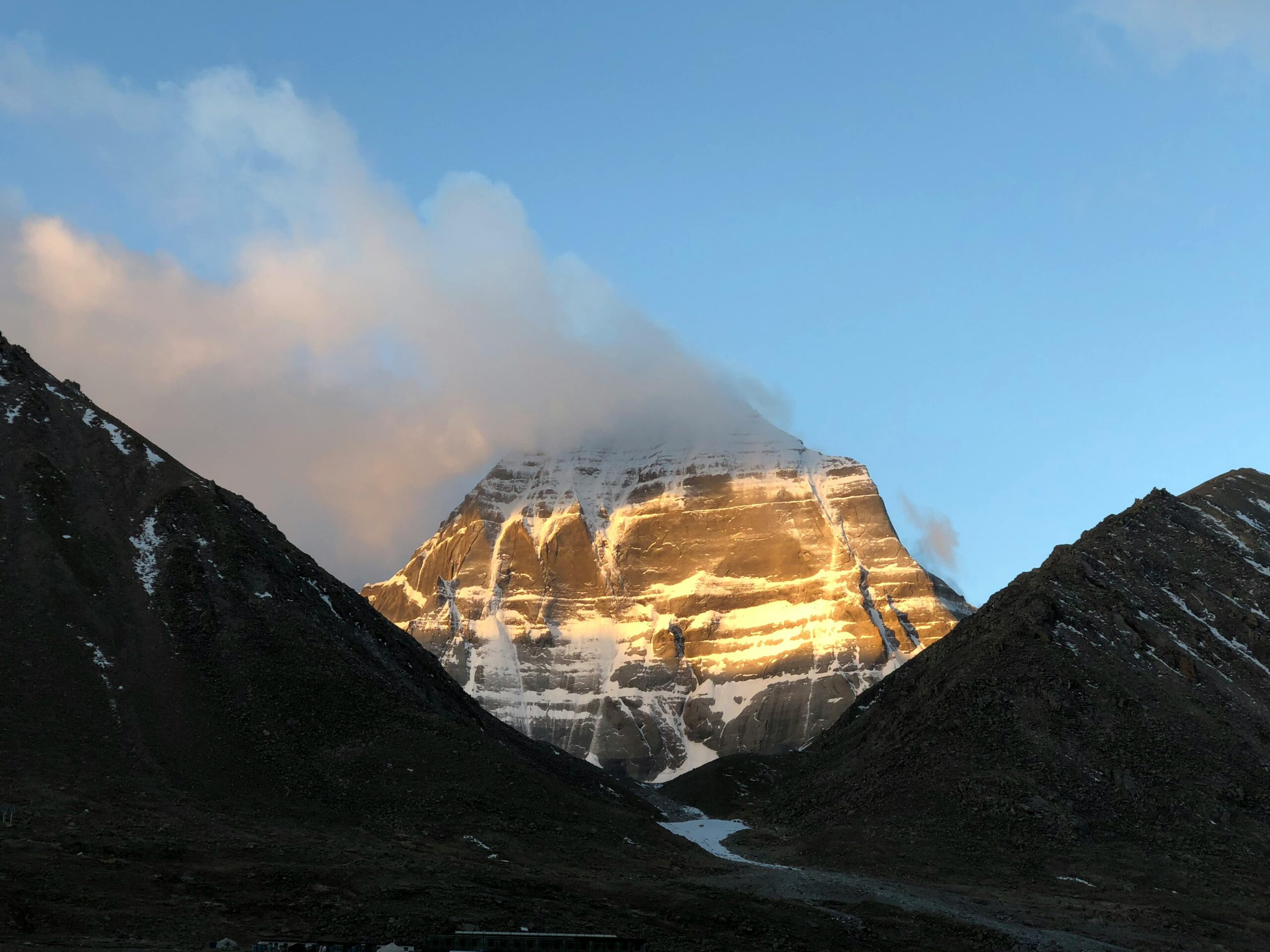
Mount Kailash Overland Tour via Kyirung
The Mount Kailash Overland Tour via Kyirung is a transformative journey that takes you through some of the most stunning landscapes on the planet. A tour leaves from Kathmandu through the Nepal-Tibet border at Kyirung, passing high-altitude grazing land, hidden lakes and remote Tibetan-inhabited settlements. The trip is revered with the sacred Mount Kailash and Lake Manasarovar, which are highly spiritual places for the Hindus, Buddhists, Jains and Bon followers. Devotees walk the sacred mountain by do the Kailash Kora, 52 km treks around the mountain, said to also educate spirituality. It is an adventure, cultural exploration, and spiritual journey rolled into one; a once-in-a-lifetime experience. This includes the well-planned logistics, experienced guides, and proper permits that make the journey smooth and enriching. Whether you are looking for a religious stream or a stream of nature, taking an overland route to Mount Kailash is nothing short of a transformative experience.
Table of Contents
-
- Best Time for the Mount Kailash Overland Tour
- Visa and Special Permits Required for the Mount Kailash Overland Tour
- Difficulty Level of the Mount Kailash Overland Tour
- Accommodation During the Mount Kailash Overland Tour
- Food and Dining Experience on the Mount Kailash Overland Tour
- Essential Packing List for the Mount Kailash Overland Tour
- Is the Mount Kailash Overland Tour Suitable for Senior Citizens?
- Transportation and Road Conditions on the Mount Kailash Overland Route
- Availability of Medical Facilities Along the Mount Kailash Overland Route
- Importance of Travel Insurance for the Mount Kailash Overland Tour
Key Highlights of the Mount Kailash Overland Tour
The Mount Kailash Overland Tour via Kyirung provides an unparalleled spiritual and adventure-filled experience. The key highlights include:
- Kyirung Border Crossing: The journey starts with a scenic drive from Kathmandu to Kyirung, the gateway to Tibet.
- Lake Manasarovar: A sacred lake where pilgrims take ritual baths and perform religious ceremonies.
- Mount Kailash Kora: A challenging yet rewarding 52 km trek around the holy mountain, offering stunning views and deep spiritual significance.
- Dolma La Pass (5,630m): The highest point of the trek, where pilgrims seek blessings and leave prayer flags.
- Monastery Visits: Explore ancient Tibetan monasteries such as Chiu Monastery and Dirapuk Monastery.
- Tibetan Culture and Landscapes: Experience the unique lifestyle of Tibetan nomads and witness vast plateaus, snow-capped peaks, and serene landscapes.
- Spiritual Fulfillment: Hindus believe circumambulating Kailash erases sins, while Buddhists see it as a path to enlightenment.
This tour blends physical adventure with spiritual awakening, making it an unforgettable journey for seekers of both faith and exploration.
Best Time for the Mount Kailash Overland Tour
The best season for the Mount Kailash Overland Tour is from May to September when weather conditions are favorable. The weather is moderately warm with typical clear skies in these months, which permits for stunning views of Mount Kailash and the surrounding scenery. Accordingly, the full moon dates in these months are especially important to pilgrims, who believe circumambulating Kailash during this time provides additional spiritual merit.
Travel is not advisable in winter (October to April), as heavy snowfall closes access to high-altitude passes, rendering the journey difficult and unsafe. Monsoon (July–August): Occasional rain in Nepal, virtually none in Tibet because of the aridity.
For a good experience, visit around May to June or September; These are the months when the weather is stable with good trekking conditions. Working with a tour operator allows for the proper planning and securing of the necessary permits required for a smooth pilgrimage.
Mount Kailash Overland Tour Visa & Special Permits
To make this journey to Mount Kailash it is mandatory for travelers to apply for various permits and visas. Chinese Group Visa is needed which is processed only in Kathmandu. Upon arrival in Nepal, travelers will surrender their original passport to the tour operator, who will handle the visa application with the Chinese Embassy.
Moreover, before visiting Tibet and restricted areas like Mount Kailash and Lake Manasarovar, you are required to apply for the Tibet Travel Permit and the Alien Travel Permit. They are issued by the Tibet Tourism Bureau and must be arranged with an authorized travel agency.
Those with Indian passports flying into the yatra need a special Kailash Mansarovar Yatra Permit that is issued from outside and routed through the Foreign Affairs Office in Tibet.
Since it can take time for permits to be processed, travelers are advised to plan their trip at least a month prior to arrival to ensure that documentation is ready before departure.
Difficulty Level of the Mount Kailash Overland Tour
Due to the high-altitude terrains the Mount Kailash Overland Tour is a moderate to highly challenging tour. Although the overland journey itself is not intense, the Kailash Kora (parikrama) includes trekking at over 5,600 meters (18,372 feet) above sea level, which is strenuous.
Trekkers have to cover 52 km (32 miles) in three days, the most challenging part being the Dolma La Pass (5,630m). Altitude can make you feel sick, the sickness known as acute mountain sickness (AMS), so it is important to acclimatize properly.
It needs a decent level of fitness, stamina, and some hiking experience. Those who cannot trek can hire porters, horses or yaks to help make the journey. This spiritually rewarding trek can be completed if travelers are adequately prepared and acclimatized.
Accommodation During the Mount Kailash Overland Tour
There are some basic guesthouses or monastery lodges on the Mount Kailash Overland route, and tented camps in the deep wilderness.
In Kathmandu, guests even lodge at 3 to 5-star hotels. Once in Tibet itself, lodging is more rudimentary. There are cheap basic hotels in Kyirung, Saga, and Darchen, with twin-sharing rooms and minimal amenities.
Basic Guesthousevery ach trek is basic guesthouse or dormitory based on monastery so the facilities is very basic. Zutulpuk and Dirapuk monasteries offer basic rooms with blankets, but travelers should bring their own warm sleeping bag.
Hot water, showers and modern toilets in the countryside are a rarity. The humble accommodation experience may also lend an exhilarating, back-to-nature vibe to the pilgrim experience that brings travelers – and Tibetans – closer to the natural environment and a spirituality that has become part-and-parcel to the landscape ending with a statement that this is as simple as you can get.
Food and Dining Experience on the Mount Kailash Overland Tour
Food on Mount Kailash Overland Tour is simple but nutritious, can be vegetarian or non-vegetarian depending on the traveler.
In Kathmandu, visitors dine on a range of Nepali, Indian and Western cuisine. The food options will be limited once you have reached Tibet. In towns like Saga and Darchen, guesthouses serve Tibetan, Nepali, Indian and Chinese dishes that include rice, noodles, soup and momos.
Food on the Kailash Kora trek is simple and consists mainly of dal bhat (lentil soup with rice), Tibetan bread, porride, and tea. They recommend instant noodles, biscuits and energy bars for more sustenance.
It is critical to stay hydrated with plenty to drink and eat warm and high-calorie meals to avoid altitude sickness. While dry fruits, energizers and herbal tea can help you in elevating the soothing dining experience.
Essential Packing List for the Mount Kailash Overland Tour
Packing wisely ensures a comfortable and successful Mount Kailash Overland Tour. Essential items include:
Clothing: Thermal layers, fleece jackets, waterproof jackets, gloves, trekking pants, and woolen socks.
Footwear: Sturdy trekking boots and comfortable shoes for lower altitudes.
Sleeping Gear: A -10°C sleeping bag for cold nights.
Personal Items: Sunscreen, sunglasses, lip balm, moisturizer, and personal hygiene products.
Medication: Altitude sickness pills (Diamox), painkillers, first-aid kit, and any prescribed medications.
Food & Hydration: Energy bars, instant noodles, dry fruits, a reusable water bottle, and water purification tablets.
Accessories: A headlamp, trekking poles, a backpack, a rain cover, and a camera for capturing the stunning landscapes.
Since the tour involves high altitudes, packing light but effectively ensures a smooth and comfortable journey.
Is the Mount Kailash Overland Tour Suitable for Senior Citizens?
Yes, Mount Kailash Overland Tour is open to senior citizen but provides that they are physically fit and can take high altitude environment. As the trip is taking place at an altitude greater than 5,000 meters (16,400 feet), acclimatize properly and get a medical check-up prior to the trip.
Breezes and porters are available for those unable to make the Kailash Kora (circumambulation) on foot. Those who are over 65 years also need to take additional care with fluid intake, altitude sickness medication and maintaining a gradual pace.
The natural and spiritual wonders of Mount Kailash can be comfortably enjoyed by senior travelers with the proper preparations and guidance.
Transportation and Road Conditions on the Mount Kailash Overland Route
The journey to Mount Kailash via Kyirung combines highways with rugged mountain roads. Travelers drive from Kathmandu to Kyirung along winding mountain paths, taking in scenic landscapes and passing through small villages. Once in Tibet, well-maintained roads link major towns like Saga, Darchen, and Mansarovar, making the trip relatively smooth.
However, the route to Mount Kailash traverses high-altitude areas, where weather conditions can sometimes impact travel. The final stretch near Mansarovar Lake and the Kailash Kora trek features gravel and dirt roads, which require careful navigation.
Comfortable land cruisers, buses, or jeeps are used to tackle the rough terrain, ensuring a safe and scenic drive. Despite some bumpy sections, the stunning Himalayan vistas make the journey truly unforgettable.
Availability of Medical Facilities Along the Mount Kailash Overland Route
The Mount Kailash Overland route has very few medical facilities, particularly in remote areas. And while there are hospitals in Kathmandu and Lhasa, only basic clinics and first-aid stations exist in Saga, Darchen and Kyirung once travelers cross into Tibet.
No Hospitals during the Kailash Kora trek, so taking a first-aid kit with you is a must. Emergency evacuation insurance is limited, so make sure your travel insurance has medical coverage. Travelers with existing conditions should speak to a physician ahead of travel.
Importance of Travel Insurance for the Mount Kailash Overland Tour
As the Mount Kailash Overland Tour is a high-altitude trek in a remote area, travel insurance is a requirement. Travelers should add a comprehensive insurance plan that covers medical emergencies, trip cancellations, evacuations and lost baggage.
Medical infrastructure in Tibet itself is limited, so insurance will need to include emergency evacuation by helicopter or road transport in the event of altitude sickness. Policies should also include delays because of weather conditions or unforeseen political restrictions in Tibet.
Before purchasing insurance, see if it covers more than 5,600m (18,372ft) and above. It’s important to have the right coverage that provides peace of mind and financial protection should there be emergencies during this sacred journey.

